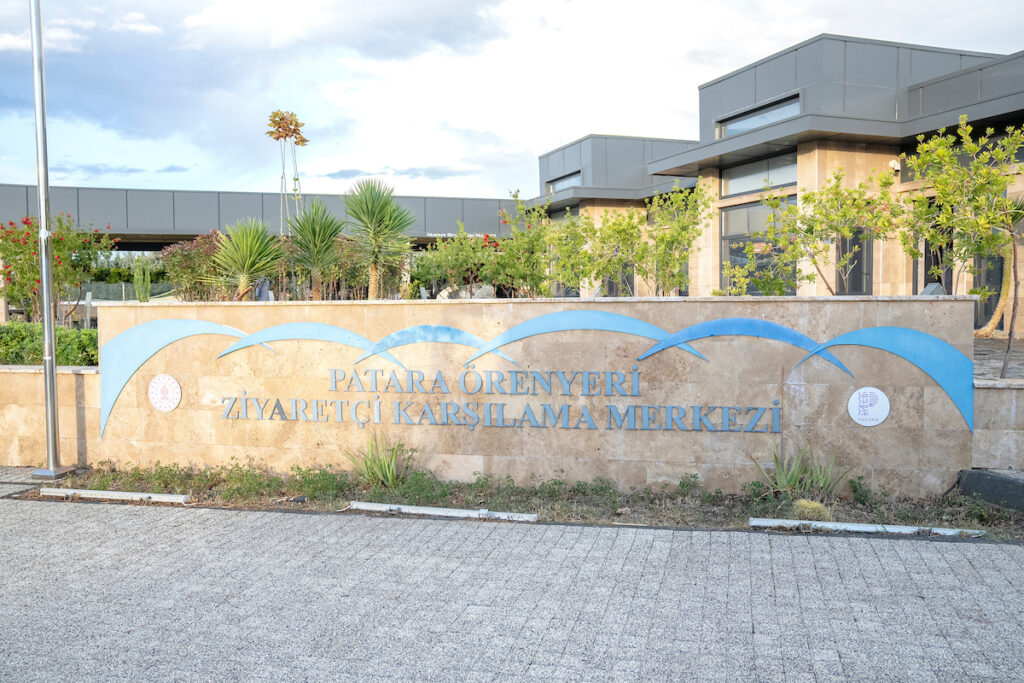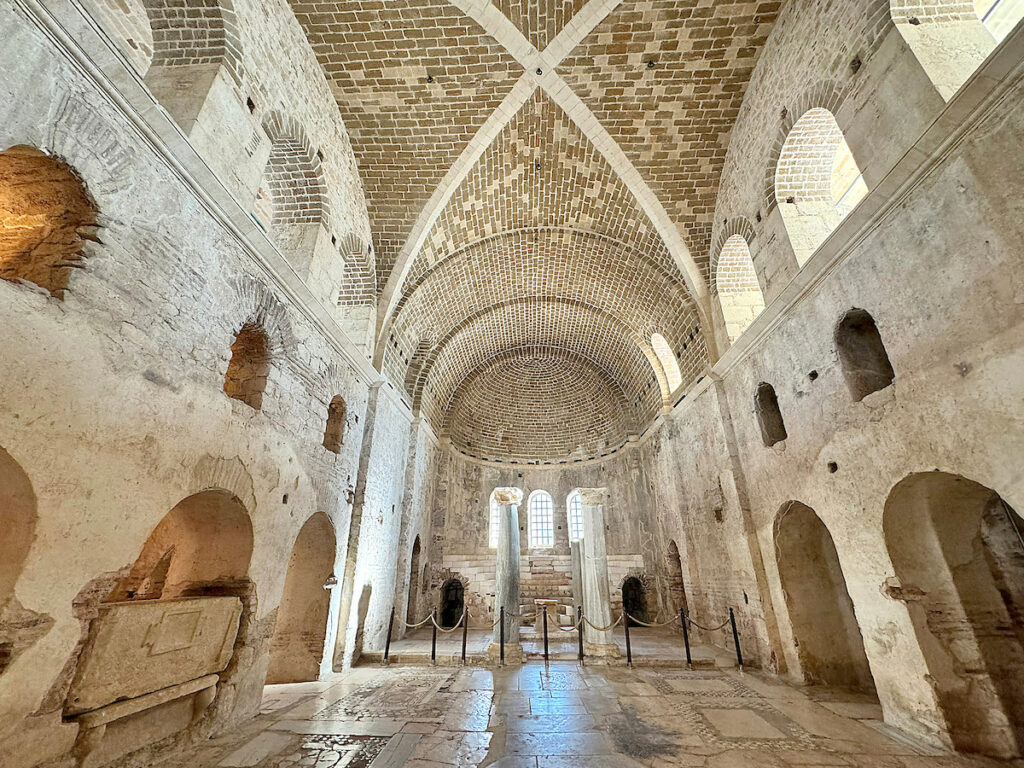Saint Nicholas: The Turkish Origins of Santa Claus
Everyone knows St. Nick, or at least they think they do. When the trees have lost their leaves, the weather starts cooling down, when the iconic voice of Mariah Carey echoes through every building, the kids get excited. Santa’s going to be bringing presents! You may have heard that he was invented by Coca Cola to sell more pop in the winter, but in reality his origins trace much farther back to Turkiye.
A 4th century Christian Bishop from Patara in Lycia (modern day Turkiye), St. Nicholas was known and celebrated for his generosity and kindness, particularly with children and the less fortunate. Born wealthy but deeply compassionate, he secretly dropped presents and gold coins down chimneys because he knew people were too proud to accept them face to face.
On our recent trip to Türkiye, we were able to travel beyond Istanbul and visit Lycia and trace the origins of the modern day Santa back to his roots. Lycia is known for summer travel and vacations in Türkiye with its proximity to the beautiful beach towns. A December visit was the perfect holiday adventure to visit the area in the off season and have the historical sites to yourself for exploration.

The Birthplace of a Legend
At the time, around 270 CE, Lycia was a Roman capital and a thriving metropolitan port town on the Mediterranean coast. If you visit, there are beautiful and fascinating ruins of the ancient Roman warehouses, likely built by Hadrian himself when he came to Lycia around 170 CE. There are also ruins of ancient Roman baths, a well-preserved theater and lighthouse built by Emperor Nero.

While he was born in Patara, he may be more famous for his charitable acts in the nearby Demre (then Myra). This beautiful town is home to the Church of St. Nicholas, and has historically inspired many pilgrimages from the Byzantine era to now. The church itself has been burned down and destroyed several times over, and suffered catastrophic damage from nature due to being below sea level. Its most recent renovation was funded by the local government and completed in May 2023, and is now open to tourists and pilgrims.


From Saint to Santa
St. Nicholas may have begun as a local and much beloved Bishop, but the stories of his generosity spread across Europe. Among other miracles and acts, he famously saved three young girls from prostitution by tossing money for their dowries through their windows. He also may have saved three men from unjust execution, and the legends say that he resurrected children murdered and pickled by a butcher. In the year 1087, Italian sailors were so inspired by his acts that they stole his relics from Demre and brought them to Bari, Italy, which further amplified his reach.


Eventually, he became less popular in Europe post Reformation, as people rejected Catholicism and saints, and he almost became forgotten. However, the Dutch held on – they called him Sinterklaas, a tall, skinny Bishop who delivered gifts to children on December 6, the feast day of Saint Nicholas and supposed death date. The Dutch then brought Sinterklaas to the “New World” and with it their traditions.

The original image of St. Nicholas, a generous bishop giving gifts, transitioned over time to a ruddy-cheeked, heavy-set, non-denominational smiling man in a red suit and full white beard thanks to American popular media and Coca Cola advertising. The 1823 poem ‘Twas the Night Before Christmas inspired the iconic Americanized Santa. Despite their differences, the original St. Nick and modern day Santa still do share a beautiful cause: the spirit of generosity and gift giving to children.


Visiting the Church of Saint Nicholas
For those interested in exploring the history of the real Saint Nicholas, the Church of Saint Nicholas in Demre is a must-visit destination. Just 55 miles outside of Antalya, Demre is a quiet town of 15,000 and makes for a delightful side trip (or main focus for the devout!). Each December 6 and May 9, the church and town commemorates and celebrates the life of Saint Nicholas with a festival.


The church boasts beautiful mosaics and fresco paintings along with an empty tomb that was recently excavated. Researchers have revealed a limestone sarcophagus that may be the original burial site of Saint Nicholas. While only the lid of the sarcophagus has been fully uncovered so far, further excavations are expected to provide more definitive evidence in the coming months.




Saint Nicholas served as the Bishop of Myra until his death in 343 CE. Following his passing, his remains were interred at his original burial site, over which the Church of St. Nicholas was later constructed. By the 11th century, his relics were reportedly relocated to the Basilica di San Nicola in Bari, Italy.


During the First Crusade, additional relics believed to belong to him were taken to Venice. In 1953, scientific analysis confirmed that bones from both Bari and Venice came from the same individual. However, whether these remains definitively belong to Saint Nicholas remains uncertain.


Many question still remain but archeologists are one step closer to solving some of the mysteries surrounding this beloved historical figure.

This trip through history was the perfect way to kickoff the Christmas season with an educational experience for the ages to learn about the real life St. Nick.
Words by Caitlin E. Bower and Amy Harris @thetraveladdictig

